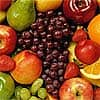
What's hot
What's hot
| News flashes are posted here frequently to keep you up-to-date with the latest advances in health and longevity. We have an unparalleled track record of breaking stories about life extension advances.
CoQ10 holds promise for male infertility
The current trial enrolled 212 infertile men aged 21 to 42 who had abnormalities in sperm count, motility (movement), and morphology (formation). Participants were randomized to receive 300 milligrams coQ10 per day or a placebo for 26 weeks, followed by a 30 week treatment-free phase. Sperm quality, hormones, and blood and seminal coQ10 levels were evaluated at monthly intervals. After 26 weeks of treatment, plasma and seminal coQ10 levels increased by 85.5 percent and 135 percent in subjects who received the compound, while remaining relatively unchanged in the placebo group. Serum follicle stimulating hormone and luteinizing hormone levels, which, when elevated, can be a sign of testicular problems, declined among those who received coQ10 compared with the placebo. Significant improvements in sperm count, density, and motility were observed in men who received coQ10 compared with the placebo after 26 weeks. At the conclusion of the 30 week treatment-free phase, sperm count and motility were still higher among those that received coQ10 compared to those that received the placebo, although the difference was not considered significant. “This study indicates that oral supplementation with coQ10 significantly improves semen parameters compared with that of placebo,” Dr Safarinejad concluded. “Although this observation may not be clinically relevant, we propose that because of its antioxidant effects and safety profile, coQ10 should be considered a good candidate for treatment in infertile men.” —D Dye Fasting puts worm reproduction on hold
"For many, it has been assumed that cells and organs remain relatively stable during periods of starvation or caloric restriction," observed lead author and molecular physiologist Marc Van Gilst, PhD. "The idea that an entire system would kill itself off during starvation and then regenerate upon food restoration was very surprising. The fact that extremely old worms could generate new eggs and produce healthy offspring long after their normally fed counterparts had reproduced and died was also unexpected." For their research, Dr Van Gilst and his associates withheld food from genetically normal worms and worms that lacked a functioning gene known as NHR-49, which expresses a signaling receptor protein in the nuclei of cells that promotes a metabolic response to calorie restriction. The worms were monitored during fasting and subsequent feeding restoration, and changes in ovulation, cell death, germline stem cell survival, and fertility noted. "In worms that contained an inactive NHR-49 gene, reproductive recovery and fertility after starvation were severely impaired," Dr Van Gilst stated. "We found that reproductive arrest and recovery are highly dependent on a functioning NHR-49 gene." "The identification of a nuclear receptor that turns on and off the beneficial response to nutrient deprivation would be of great interest because it would be a candidate for drugs aimed at tricking the body, or specifically the reproductive system, into thinking they are calorically restricted or starved, even when food intake is normal,” he added. —D Dye Review associates omega-3 supplementation with reduced cardiovascular deaths over up to 4.6 years of follow-up
Paul E Marik, MD, of Thomas Jefferson university in Philadelphia and Joseph Varon, MD of the University of Texas Health Science Center in Houston sought to determine whether supplementation with the omega-3 fatty acids eicosapentaenoic acid (EPA) and docosahexaenoic acid (DHA) for at least a year reduces cardiovascular events in both patients at high risk of cardiovascular death and those at moderate risk. High risk patients were defined as having been recently diagnosed with heart attack or heart failure, or receiving an implanted defibrillator, and those at moderate risk had stable atherosclerotic disease or high cholesterol. Drs Marik and Varon selected 11 studies including a total of 39,044 patients for their review. The combined dose of EPA and DHA in the trials averaged 1.8 grams per day, and the trials last an average of 2.2 years. Over follow-up, supplementation with omega-3 fatty acids was associated with a 13 percent lower risk of death from cardiovascular disease as well as a 13 percent reduction in the risk of sudden cardiac death, an 8 percent reduction in mortality from all causes, and an 8 percent lower risk of nonfatal cardiovascular events compared with the risks experienced by those who received a placebo. The reductions in mortality were mainly observed in studies that enrolled high risk patients, and the decrease in nonfatal cardiovascular events primarily occurred in moderate risk patients. "Dietary supplementation with omega-3 fatty acids should be considered in the secondary prevention of cardiovascular events," the authors conclude. —D Dye Vitamin D has long been essential to primate immune function
In primates, innate immune response to attack by microorganisms functions properly only in the presence of vitamin D via its regulation of the cathelicidin antimicrobial peptide (CAMP). Vitamin D also plays a role in the adaptive immune response, by preventing it from overacting with inflammation. "It's essential that we have both an innate immune response that provides an immediate and front line of defense, but we also have protection against an overreaction by the immune system, which is what you see in sepsis and some autoimmune or degenerative diseases," Dr Gombart stated. "This is a very delicate balancing act, and without sufficient levels of vitamin D you may not have an optimal response with either aspect of the immune system." “Evolutionary selection to place the CAMP gene under regulation of the vitamin D pathway may enable suppression of inflammation while potentiating innate immunity, thus maximizing the overall immune response to a pathogen and minimizing damage to the host,” the authors conclude. —D Dye Findings published in AMA journal call into question study linking melanoma to antioxidants
For the current investigation, Maryam M. Asgari, MD, MPH, and colleagues evaluated data from 69,671 participants in the Vitamins and Lifestyle (VITAL) study, which was designed to examine associations between supplement use and cancer risk. Questionnaires completed upon recruitment from 2000 and 2002 were analyzed for multivitamin intake over the previous ten years as well as intake of the antioxidants evaluated in the SUVIMAX study. The researchers found no significant association between multivitamin use and the risk of melanoma. When individual beta-carotene and selenium supplements at doses similar to those evaluated in the SUVIMAX trial were separately analyzed, there was also no association revealed. The authors comment that the association found in the SUVIMAX trial between antioxidant supplement use and melanoma risk in women could be explained by methodological flaws. "Consistent with the present results, case-control studies examining serologic levels of beta carotene, vitamin E and selenium did not find any association with subsequent risk of melanoma," the authors note. "Moreover, the Nurses' Health Study reported no association between intake of vitamins A, C and E and melanoma risk in 162,000 women during more than 1.6 million person-years of follow-up." “The results of the SUVIMAX study should be interpreted with caution,” they conclude. —D Dye Study finds more than half of acutely ill patients are vitamin B2 deficient
Salah Gariballa, MD of United Arab Emirates University’s Department of Internal Medicine, in collaboration with researchers at the University of Sheffield in England, randomized 297 acutely ill, hospitalized patients to receive 1.3 milligrams riboflavin or a placebo for 6 weeks. Blood samples were analyzed before and after the treatment period and at 6 months for riboflavin status. Fifty-six percent of the participants were found to be riboflavin deficient at the beginning of the trial. Smokers and those with chronic obstructive pulmonary disease (COPD) tended to have lower levels of the vitamin than nonsmokers and those without COPD. Among the group that received the vitamin, riboflavin status improved at the end of 6 weeks, but had deteriorated by 6 months after the subjects discontinued the supplements. The study is the first to examine riboflavin deficiency in an acutely ill, hospitalized population, and to show that supplementation can improve their riboflavin status. In their discussion of the findings, the authors remark that subclinical riboflavin deficiency has been associated with cardiovascular disease, cancer, impaired iron handling and blindness. “We found that a high proportion of acutely ill patients were biochemically deficient in riboflavin and that dietary supplementation at physiological concentrations significantly improved riboflavin status,” the authors conclude. “Although the improvement in riboflavin status was not sustained after the supplements were discontinued, the clinical significance of these findings during acute illness and convalescence/rehabilitation requires further investigation.” —D Dye Carnitine improves glucose tolerance in animal model of metabolic syndrome
The current study is the result of previous observation by Deborah Muoio, PhD, of Duke’s Sarah W. Stedman Nutrition and Metabolism Center and her associates that the skeletal muscle of obese rats produce elevated levels acylcarnitines from free carnitine. "We suspected that persistent increases in acylcarnitines in the rats were causing problems, and we could also see that the availability of free carnitine was decreasing with weight gain and aging," Dr Muoio stated. "It appeared that carnitine could no longer do its job when chronic metabolic disruptions were stressing the system. That's when we designed an experiment to add extra carnitine to the rats' diet." In one experiment, Dr Muoio and her associates used rats provided with standard chow and rats given a lifelong high fat diet to model the middle-aged onset of metabolic syndrome in obese humans. After ten months on the diets, six animals in the high fat diet group were given 300 milligrams per kilogram body weight L-carnitine per day for 2 months. Animals that received high fat diets developed obesity and insulin resistance as evidenced by high fasting insulin levels and impaired glucose tolerance, however, those that received carnitine had improvements in their cells’ fuel-burning capacity and partial improvements in insulin sensitivity. In another experiment using cultured human muscle cells, carnitine lowered lipid-induced suppression of glucose oxidation and promoted glucose disposal, supporting the results observed in the rat study. Dr Muoio’s team plans to test L-carnitine supplements in individuals aged 60 to 80 with glucose intolerance. —D Dye Four behaviors lower common causes of death by 78 percent
Earl S. Ford, MD, MPH, of the Centers for Disease Control and Prevention and his associates evaluated data from 23,513 participants in the European Prospective Investigation Into Cancer and Nutrition–Potsdam (EPIC-Potsdam) study. Subjects were between the ages of 35 to 65 upon enrollment. Questionnaires completed at the beginning of the study and every two to three years during follow-up were used to assess smoking status, body mass index, exercise habits and dietary intake. Over a 7.8 year average follow-up, 0.9 percent of the participants experienced heart attacks and 0.8 percent had strokes, indicating cardiovascular disease; 3.7 percent developed diabetes, and 3.8 percent of the participants were diagnosed with cancer. For the 9 percent of subjects who had never smoked, had a body mass index lower than 30, exercised at least 3 and ½ hours per week, and consumed a high amount of fruits and vegetables and a reduced amount of meat, the risk of experiencing any of the diseases was 78 percent lower than those who reported practicing none of these healthy factors. Having a low body mass index was responsible for the greatest reduction in disease risk, followed by not smoking, exercising, and adhering to a healthy diet. In an accompanying commentary, David L. Katz, MD, MPH notes that “We have studies to show that even gene expression submits to the power of lifestyle. Thus, the perennial debate of nature versus nurture describes a false dichotomy. With the knowledge we have already in hand, we can nurture nature.” —D Dye Higher fiber intake associated with lower inflammation marker
Researchers at North-West University in Potchefstroom, South Africa selected seven clinical trials including a total of 192 men and 362 women for their analysis. The objective of the majority of the trials was not to investigate the effects of fiber on CRP, but to evaluate the effects of different fats and diets. The sources of fiber used in the interventions included whole grain bread and cereal, vegetables, fruits, beans, nuts and seeds; viscous fibers from oats, barley, psyllium, and a high fiber DASH diet. The trials' durations ranged from 3 to 24 months. All studies except one trial of psyllium fiber alone were associated with a reduction in CRP concentrations. Fiber intake of at least 3.3 grams per megajoule (a measure of energy equal to 239 kcal) was associated with a reduction in CRP of 25 to 54 percent. A possible mechanism for fiber in CRP reduction is decreased body weight. Other mechanisms include changes in the secretion, turnover or metabolism of insulin, glucose, adiponectin, interleukin-6, free fatty acids and triglycerides. Additionally, fiber's normalizing effect on intestinal flora could result in lower levels of inflammation via reduction in the bowel's inflammatory cytokines. "Further research is needed to more fully understand which types of fiber work best and which individuals are most susceptible to its anti-inflammatory effect, so that the long-term goal of reduction in cardiovascular risk can be achieved,” the authors conclude. —D Dye Grapes and berries may help protect the brain
James A. Joseph and his colleagues at Tufts University in Boston reviewed the results of studies conducted by their laboratory as well as other research that included human trials. The authors noted that there is abundant evidence that the polyphenolic compounds found in plant foods have significant antioxidant and anti-inflammatory actions, and that additional mechanisms, including improvements in receptor sensitivity and signal transduction deficits may additionally contribute to the reduction in age-related motor and cognitive deficits observed in association with grape, blueberry and strawberry supplementation. In one study conducted by the current research team, the effects of 10 and 50 percent concentrations of grape juice were compared with those of a placebo on age-related deficits in behavioral and neuronal function in older rats. Animals that received the 10 percent concentration were found to have enhanced dopamine release and improved cognitive performance, while the 50% concentration was associated with improved motor function. In a clinical trial, Concord grape juice was associated in significant improvement in cognitive function compared to the effects of a placebo in older individuals with cognitive impairment without dementia. In other research conducted by the team, blueberry and strawberry extracts prevented age-related cognitive deficits in rats and reversed deficits in neuronal and behavioral function. And in humans, blueberry juice improved memory and learning in a 12 week study. The findings “suggest that it may be possible to increase ‘health span’ by reversing the deleterious effects of senescence on cognitive and motor behavior via nutritional modulation,” the authors conclude. —D Dye Intermittent calorie restriction more effective than chronic restriction in mammary cancer prevention
Professor Margot P. Cleary, PhD and her associates divided 10 week old mice to receive diets that allowed them to eat as much as they wanted, intermittently restricted diets consisting of cycles of restricted calories for three weeks followed by 3 weeks of unrestricted eating, or chronic 25 percent restricted diets. At 72 to 82 weeks of age, half of the animals in each group were examined for tumors. Seventy-one percent of the unrestricted mice had mammary tumors, compared to 35 percent of chronically restricted mice. Only 9 percent of the animals who underwent intermittent dietary restriction had tumors. Intermittently restricted mice also had significantly lower serum insulin-like growth factor-I (IGF-1), which has been associated with cancer. "Further identification of serum factors that are involved in tumor development would possibly provide a way to identify at risk individuals and target interventions to these people," Dr Cleary stated. In an accompanying editorial, Michael Pollak of McGill University remarked that the study "contributes to accumulating evidence that caloric restriction acts by altering hormone levels rather than by directly starving cancers of energy. In particular, lower levels of insulin are associated with reduced food intake, and this may be protective." "Humans frequently regain lost weight discouraging the application of calorie restriction protocols for disease prevention," Dr Cleary observed. "We hope these studies will identify biomarkers and/or pathways that could be used in human studies to determine agents that would mimic calorie restriction." —D Dye Majority of American children have insufficient vitamin D levels
The researchers, led by Einstein assistant professor medicine Michal L. Melamed, MD, evaluated data from over 6,000 children aged 1 to 21 who participated in the National Nutrition Examination Survey (NHANES) 2001-2004. "Several small studies had found a high prevalence of vitamin D deficiency in specific populations of children, but no one had examined this issue nationwide," Dr Melamed observed. Insufficient levels of vitamin D were defined as 15 to 29 nanograms per milliliter (ng/mL), and deficient levels as less than 15 ng/mL.Vitamin D insufficiency was revealed in 61 percent of the participants, a percentage which, if applied to the U.S. population, is equivalent to 50.8 million children. Deficiency was found in 9 percent of the subjects, equal to 7.6 million children. Although participants who consumed 400 international units of vitamin D per day were less likely to experience a deficiency, just 4 percent of the children used vitamin D supplements. "The message for pediatricians is that vitamin D deficiency is a real problem with consequences not only for bone health but also potentially for long-term cardiovascular health.” Dr Kumar concluded. “Pediatricians should be screening children for vitamin D levels, especially in the high-risk populations." —D Dye
|

 The July, 2009 issue of
The July, 2009 issue of  In an article published online on August 27, 2009 in the journal
In an article published online on August 27, 2009 in the journal  The July, 2009 issue of the journal
The July, 2009 issue of the journal  Researchers at the Linus Pauling Institute and UCLA reported in the journal
Researchers at the Linus Pauling Institute and UCLA reported in the journal  The August, 2009 issue the American Medical Association journal
The August, 2009 issue the American Medical Association journal  The results of a clinical trial described online on July 30, 2009 in the
The results of a clinical trial described online on July 30, 2009 in the  In an article scheduled for publication in the August 21, 2009 issue of the
In an article scheduled for publication in the August 21, 2009 issue of the  The August 10/24, 2009 issue of
The August 10/24, 2009 issue of  An article published in the August, 2009 issue of the
An article published in the August, 2009 issue of the  An article published ahead of print online on July 29, 2009 in the
An article published ahead of print online on July 29, 2009 in the  The August 2009 issue of the journal Cancer Prevention Research reported the discovery of researchers at the University of Minnesota’s Hormel Institute that calorie restriction needed only be implemented intermittently to result in significant protection against the development of tumors in a mouse model of breast cancer.
The August 2009 issue of the journal Cancer Prevention Research reported the discovery of researchers at the University of Minnesota’s Hormel Institute that calorie restriction needed only be implemented intermittently to result in significant protection against the development of tumors in a mouse model of breast cancer. The results of a study conducted by researchers at the Albert Einstein College of Medicine of Yeshiva University, published online on August 1, 2009 in the journal
The results of a study conducted by researchers at the Albert Einstein College of Medicine of Yeshiva University, published online on August 1, 2009 in the journal